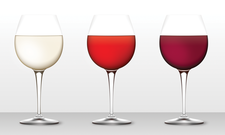Running Windows programs on Linux with Wine
Wine Importer

© Shanna Korby, Fotolia
Users who move from Windows to Linux often miss some of their favorite programs and games. Wouldn't it be practical to run Windows applications on the free Linux operating system? Time for a little taste of Wine.
Many Linux migrants miss games and graphics programs such as CorelDRAW or products such as Adobe Photoshop. The only solution is to install Windows parallel to Linux -- or try Wine, which tricks applications into believing they are running on a Windows system.
The history of Wine goes back to the year 1993. At the time, Sun developed a small tool to run Windows applications on its own Solaris operating system – without the need for a Windows license or other interaction. This software inspired Bob Amstadt and Eric Youngdale to develop something similar for Linux. A short while later, the first version of Wine was released. Today, more than 300 volunteer programmers from all over the world continue to contribute to the Wine project.
What's in a Name?
To run Windows programs on Linux, Wine uses a fairly complex trick: It sits between the Windows application and Linux like a simultaneous interpreter. If the Windows application says: "Draw a button," Wine passes this command directly to Linux. In contrast to VirtualBox or VMware, Wine does not emulate a whole PC and is thus not a real emulator. This also explains the name Wine, which means Wine Is Not an Emulator.
[...]
Buy this article as PDF
(incl. VAT)
Buy Linux Magazine
Subscribe to our Linux Newsletters
Find Linux and Open Source Jobs
Subscribe to our ADMIN Newsletters
Support Our Work
Linux Magazine content is made possible with support from readers like you. Please consider contributing when you’ve found an article to be beneficial.

News
-
Mozilla Plans to AI-ify Firefox
With a new CEO in control, Mozilla is doubling down on a strategy of trust, all the while leaning into AI.
-
Gnome Says No to AI-Generated Extensions
If you're a developer wanting to create a new Gnome extension, you'd best set aside that AI code generator, because the extension team will have none of that.
-
Parrot OS Switches to KDE Plasma Desktop
Yet another distro is making the move to the KDE Plasma desktop.
-
TUXEDO Announces Gemini 17
TUXEDO Computers has released the fourth generation of its Gemini laptop with plenty of updates.
-
Two New Distros Adopt Enlightenment
MX Moksha and AV Linux 25 join ranks with Bodhi Linux and embrace the Enlightenment desktop.
-
Solus Linux 4.8 Removes Python 2
Solus Linux 4.8 has been released with the latest Linux kernel, updated desktops, and a key removal.
-
Zorin OS 18 Hits over a Million Downloads
If you doubt Linux isn't gaining popularity, you only have to look at Zorin OS's download numbers.
-
TUXEDO Computers Scraps Snapdragon X1E-Based Laptop
Due to issues with a Snapdragon CPU, TUXEDO Computers has cancelled its plans to release a laptop based on this elite hardware.
-
Debian Unleashes Debian Libre Live
Debian Libre Live keeps your machine free of proprietary software.
-
Valve Announces Pending Release of Steam Machine
Shout it to the heavens: Steam Machine, powered by Linux, is set to arrive in 2026.

